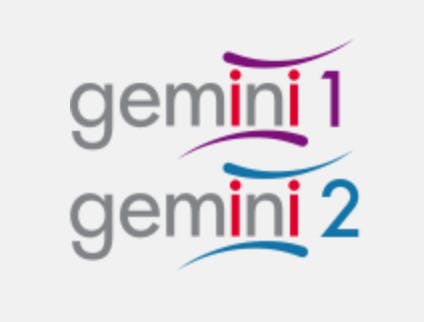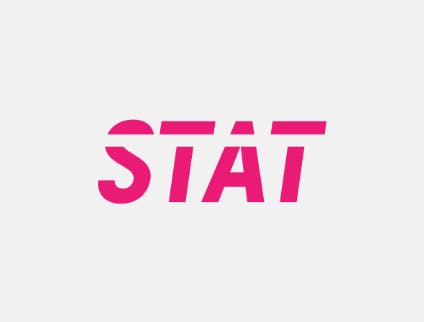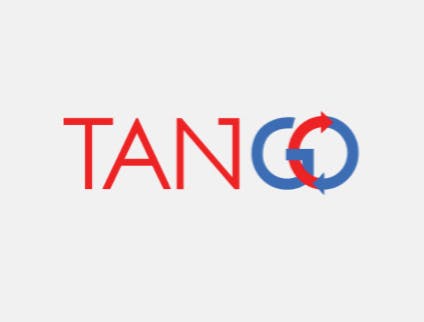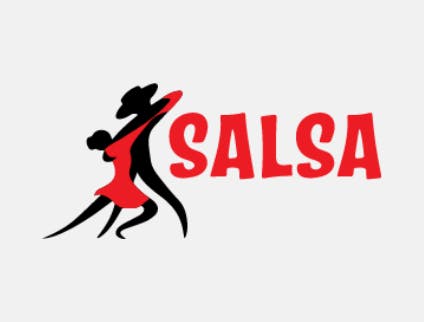PROVEN VIROLOGICAL CONTROL ACROSS DIVERSE PATIENT GROUPS
DTG 50 mg + 3TC 300 mg used in the GEMINI and most real-world studies.
ITT–E=intent-to-treat–exposed; PP=per protocol.
*From a literature search, up to July 2021.

KEEPING LONG-TERM HEALTH IN MIND

WITHOUT TDF, TAF AND ABC
DOVATO IS RECOMMENDED IN TREATMENT GUIDELINES
BHIVA Guidelines 2022
Recommended as an initial treatment for most people living with HIV in naïve and switch settings.[27]
Eligibility guidance:
- No baseline lamivudine resistance
- Baseline viral load less than 500,000 copies/mL
- Baseline CD4 count greater than 200 cells/mm3
- No active Hepatitis B infection and if at risk of Hepatitis B, Hepatitis B virus immune
Exceptions (not suitable for those):
- In the context of transmitted drug resistance
- With documented/archived/suspected M184IV mutation
- HIV-related cognitive impairment
- Diagnosed during pregnancy
- Consider with caution with patients with PHI, opportunistic diseases, or renal impairment
EACS Guidelines 2021
Recommended as an initial regimen for treatment-naïve patients and as a switch strategy for virologically suppressed patients[28]
Requirements for treatment-naïve patients:
- HBsAg negative
- HIV viral load <500,000 copies/mL
- Not recommended after PrEP failure
Requirements for switch patients:
- No historical resistance
- HBV immunity, or if non-immune, concomitant HBV vaccination
DHHS Guidelines 2022
Recommended as an initial regimen for most PLHIV (AI)* and as a good option for virologically suppressed patients who have no evidence of resistance to either drug[29]
Exclusions for treatment-naïve patients:
- HIV viral load >500,000 copies/mL
- HBV co-infection
- Where ART is to be started before the results of HIV genotype resistance testing for reverse transcriptase or HBV testing are available
*Rating of recommendations: A=strong; B=moderate; C=optional. Rating of evidence: I=data from randomised controlled trials; II=data from well-designed non-randomised trials, observational cohort studies with long-term clinical outcomes, relative bioavailability/bioequivalence studies or regimen comparisons from randomised switch studies; III=expert opinion.[29]
IAS Guidelines 2020
Recommended as an initial regimen for most people with HIV and as an appropriate switch strategy for virologically suppressed patients (AIa)*[30]
Not recommended in:
- Rapid start, because baseline laboratory evaluation results must be reviewed before initiation
- Chronic hepatitis B
- HIV-1 RNA >500,000 copies/mL, and perhaps a CD4+ T-cell count <200 cells/mm3, although the latter is unclear
- Patients being treated for an active opportunistic infection
Guidelines state close monitoring for adherence and virological response is needed.
*AIa-Strong panel support with evidence from ≥1 RCTs published in the peer-reviewed literature.[30]
References:
- Cahn P, Sierra Madero J, Arribas JR, et al. Three-year durable efficacy of dolutegravir plus lamivudine in antiretroviral therapy-naïve adults with HIV-1 infection. AIDS. 2022;36(1):39-48. doi:10.1097/QAD.0000000000003070
- Osiyemi O, De Wit S, Ajana F, et al. Efficacy and safety of switching to dolutegravir/lamivudine (DTG/3TC) versus continuing a tenofovir alafenamide-based 3- or 4-drug regimen for maintenance of virologic suppression in adults living with HIV-1: results through week 144 from the phase 3, non-inferiority TANGO randomized trial. Clin Infect Dis. 2022;ciac036. doi:10.1093/cid/ciac036
- Maggiolo F, Gulminetti R, Pagnucco L, et al. Five years durability of dolutegravir + lamivudine in patients with suppressed HIV-RNA. Presented at: The 11th International AIDS Society Conference on HIV Science; July 18-21, 2021; Virtual.
- Rolle C-P, Berhe M, Singh T, et al. High rates of virologic suppression with DTG/3TC in newly diagnosed adults with HIV-1 infection and baseline viral load ≥500,000 c/mL: 48-week subgroup analysis of the STAT study. Presented at: IDWeek 2021; September 29-October 3, 2021; Virtual.
- Llibre JM, Alves Brites C, Cheng CY, et al. Switching to the 2-drug regimen of dolutegravir/lamivudine (DTG/3TC) fixed-dose combination is non-inferior to continuing a 3-drug regimen through 48 weeks in a randomized clinical trial (SALSA). Presented at: The 11th International AIDS Society Conference on HIV Science; July 18-21, 2021; Virtual. Slides OALB030.
- Borghetti A, Ciccullo A, Baldin G, et al. Shall we dance? Extending TANGO’s results to clinical practice. Clin Infect Dis. 2020;71(7):e200-e201. doi:101093/cid/ciaa313
- Cabello A, López Bernaldo de Quiros JC, Pulido F, et al. 48 weeks efficacy and tolerability of dolutegravir (DTG) + lamivudine (3TC) in adult HIV naïve patients. A multicenter real life cohort. Presented at: The 11th International AIDS Society Conference on HIV Science; July 18-21, 2021. Virtual.
- Calza L, Colangeli V, Borderi M, et al. Simplification to dual therapy containing lamivudine and raltegravir or dolutegravir in HIV-infected patients on virologically suppressive antiretroviral therapy. J Antimicrob Chemother. 2020;75:3327-3333. doi:10.1093/jac/dkaa319
- Castelli A, Manzardo C, Ambrosioni J, et al; for the SOT in HIV-infected patients Working Group Investigators. Simplification to dual (2D) antiretroviral therapy with lamivudine and dolutegravir in HIV-infected patients with solid organ transplantation: a preliminary single-centre experience. Presented at: 17th European AIDS Conference; November 6-9 2019; Basel, Switzerland. Poster PE2/35.
- Correia RMA, Carvalho AC. Real life study with dual therapy in HIV-1 treatment experienced Portuguese cohort. Presented at: 23rd International AIDS Conference; July 6-10, 2020; Virtual. Slides PEB0235.
- Diaco ND, Strickler C, Giezendanner S, Wirz SA, Tarr PE. Systematic de-escalation of successful triple antiretroviral therapy to dual therapy with dolutegravir plus emtricitabine or lamivudine in Swiss HIV-positive persons. EClinicalMedicine. 2018;6:21-25. doi:10.1016/j.eclinm.2018.11.005
- Digaetano M, Monari C, Rogati C, et al. A real-life analysis of dolutegravir adverse effects in a cohort of naïve and experienced HIV-infected patients. Presented at: HIV Drug Therapy Glasgow; October 28-31, 2018; Glasgow, UK. Poster P203.
- Fernández Zamora C, Rodriguez Martinez T, Merono Saura MA, et al. Effectiveness of dolutegravir and lamivudine therapy in a two drug regimen in a third level hospital. Eur J Hosp Pharm. 2020;27(suppl 1):A79. doi:10.1136/ejhpharm-2020-eahpconf.169
- Gagliardini R, Lorenzini P, Cozzi-Lepri A, et al; for the Icona Foundation Study Group. Effect of past virological failure on dolutegravir + lamivudine as maintenance regimen. Presented at: Conference on Retroviruses and Opportunistic Infections; March 8-11, 2020; Boston, MA. Poster 0486.
- Hart J, Katiyar A, Smith C, et al. Switching to dolutegravir based two drug anti-retroviral regimens (DTG-2DR): performance in clinical practice. Presented at: 26th Annual Conference of the British HIV Association; November 22-24, 2020; Virtual.
- Hidalgo-Tenorio C, Cortés LL, Gutiérrez A, et al. DOLAMA study: effectiveness, safety and pharmacoeconomic analysis of dual therapy with dolutegravir and lamivudine in virologically suppressed HIV-1 patients. Medicine. 2019;98(32):e16813. doi:10.1097/ MD.0000000000016813
- Hiryak K, Kludjian G, Samuel R, et al. Real-world implementation of dolutegravir-lamivudine to achieve and maintain HV-1 viral suppression at an academic medical centre. Presented at: ID Week; October 21-25, 2020; Virtual.
- Lanzafame M, Nicole S, Rizzardo S, et al. Immunovirological outcome and HIV-1 DNA decay in a small cohort of HIV-1-infected patients deintensificated from abacavir/lamivudine/dolutegravir to lamivudine plus dolutegravir. New Microbiol. 2018;41(4):262-267.
- Moreno A, del Campo S, Pérez-Elías MJ, et al. Long-term safety and efficacy of integrase strand transfer inhibitor (INSTI)-based HAART in HIV-infected patients after solid organ transplantation (SOT). Presented at: 16th European AIDS Conference; October 25-27, 2017; Milan, Italy. Poster PE9/38.
- Pereira Goulart S, de Albuquerque Moraes C, Furtado da Costa A, et al. ART simplification: use of dual therapy for HIV in a public health reference centre (CRT-DST/Aids) in São Paulo, Brazil. Presented at: 17th European AIDS Conference; November 6-9, 2019; Basel, Switzerland. Poster PE2/34.
- Postel N, Schneeweiss S, Wyen C, et al. Real-world data from prospective URBAN cohort on the use of dolutegravir (DTG) + lamivudine (3TC) in ART-naïve and pre-treated people living with HIV in Germany. Presented at: HIV Glasgow 2020; October 5-8, 2020; Virtual. Poster 044.
- Stephenson L, Pan D. Clinical experience of dolutegravir + lamivudine dual treatment regimens at University Hospitals of Leicester NHS Trust. Presented at: 26th Annual Conference of the British HIV Association; November 22-24, 2020; Virtual.
- Teira R, Diaz-Cuervo H, Aragão F, et al. Shorter time to treatment failure in PLHIV switched to dolutegravir plus either rilpivirine or lamivudine compared to integrase inhibitor-based triple therapy in a large Spanish cohort (VACH). Presented at: 26th Annual Conference of the British HIV Association; November 22-24, 2020; Virtual. Poster P031.
- Toja F, Pereira Vazquez M. Dual therapy with dolutegravir and lamivudine: efficacy and safety. Eur J Hosp Pharm. 2020;27(suppl 1):A165-166. doi:10.1136/ejhpharm-2020-eahpconf.352
- Uriel AJ, Banks T, Ashton K, et al. Dual antiretroviral (ARV) therapy: safe and efficacious even in a heavily ARV experienced real-world cohort. Presented at: 26th Annual Conference of the British HIV Association; November 22-24, 2020; Virtual.
- Evitt LA, Kumar R, Kamath RD, et al. Effectiveness and tolerability of DTG+3TC in clinical practice: evidence in PLHIV from real-world data. Presented at: IDWeek™️; September 29-October 3, 2021; Virtual. Slides 898.
- British HIV Association. Guidelines. Updated October 20, 2022. Accessed October 24, 2022. https://www.bhiva.org/file/63513a1745ea9/BHIVA-guidelines-on-antiretroviral-treatment-for-adults-living-with-HIV-1-2022.pdf
- European AIDS Clinical Society. Guidelines. Version 11.0. Accessed December 17, 2021. https://www.eacsociety.org/media/final2021eacsguidelinesv11.0_oct2021.pdf
- National Institutes of Health. Guidelines for the use of antiretroviral agents in adults and adolescents with HIV. Updated January 20, 2022. Accessed February 1, 2022. https://clinicalinfo.hiv.gov/en/guidelines/hiv-clinical-guidelines-adult-and-adolescent-arv/whats-new-guidelines
- Saag MS, Gandhi RT, Hoy JF, et al. Antiretroviral drugs for treatment and prevention of HIV infection in adults: 2020 Recommendations of the International Antiviral Society–USA Panel. JAMA. 2020. doi:10.1001/jama.2020.17025
October 2022 PM-GB-DLL-WCNT-220004
Adverse events should be reported. Reporting forms and information can be found at www.mhra.gov.uk/yellowcard or search for MHRA Yellowcard in the Google Play or Apple App store. Adverse events should also be reported to GlaxoSmithKline on 0800 221441.
If you are from outside the UK, you can report adverse events to GSK/ViiV by selecting your region and market, here.








